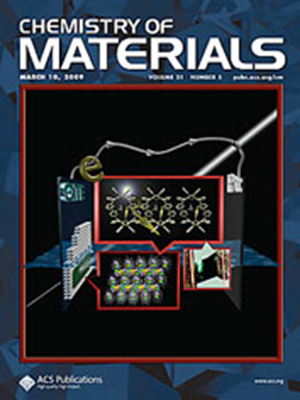Cl-Doped Cubic K3SbS4 as a Solid-State Electrolyte for K-Ion Batteries with Ultrafast Ionic Conductivity
IF 7.2
2区 材料科学
Q2 CHEMISTRY, PHYSICAL
引用次数: 0
Abstract
Developing high-performance solid-state electrolytes (SSEs) is of great significance for addressing the foundational scientific issues of K-ion batteries and accelerating their transition to practical applications. The complex experimental explorations are time-consuming and labor-intensive, and the technical barriers in phase synthesis have hindered the development speed of potassium SSEs. In this study, we studied the effect of Cl-doping on the K-ion diffusion rate of K3SbS4 via deep molecular dynamics. To reduce the quantum fluctuation phenomena during the simulation process, we simulated a system composed of approximately 3400 atoms for 500 ps and averaged the results over five runs. The results of the MD simulation show that Cl doping can induce the generation of potassium vacancies, and a small amount of doping can convert K3SbS4 from an ionic insulator to a superionic conductor with an ionic conductivity of 14.8 mS/cm at 300 K. The cubic K3–xSbS4–xClx is a promising candidate for potassium SSEs for K-ions.

cl掺杂立方K3SbS4作为超快离子电导率k离子电池的固态电解质
开发高性能固态电解质对于解决钾离子电池的基础科学问题和加速其向实际应用的过渡具有重要意义。复杂的实验探索费时费力,相合成的技术障碍也阻碍了ssi钾的发展速度。在本研究中,我们通过深层分子动力学研究了cl掺杂对K3SbS4中k离子扩散速率的影响。为了减少模拟过程中的量子涨落现象,我们以500 ps的速度模拟了一个由大约3400个原子组成的系统,并在5次运行中平均计算结果。MD模拟结果表明,Cl掺杂可诱导钾空位的产生,少量掺杂可使K3SbS4从离子绝缘体转变为超离子导体,在300 K时离子电导率为14.8 mS/cm。立方的K3-xSbS4-xClx是一种很有前途的钾离子sse的候选者。
本文章由计算机程序翻译,如有差异,请以英文原文为准。
求助全文
约1分钟内获得全文
求助全文
来源期刊

Chemistry of Materials
工程技术-材料科学:综合
CiteScore
14.10
自引率
5.80%
发文量
929
审稿时长
1.5 months
期刊介绍:
The journal Chemistry of Materials focuses on publishing original research at the intersection of materials science and chemistry. The studies published in the journal involve chemistry as a prominent component and explore topics such as the design, synthesis, characterization, processing, understanding, and application of functional or potentially functional materials. The journal covers various areas of interest, including inorganic and organic solid-state chemistry, nanomaterials, biomaterials, thin films and polymers, and composite/hybrid materials. The journal particularly seeks papers that highlight the creation or development of innovative materials with novel optical, electrical, magnetic, catalytic, or mechanical properties. It is essential that manuscripts on these topics have a primary focus on the chemistry of materials and represent a significant advancement compared to prior research. Before external reviews are sought, submitted manuscripts undergo a review process by a minimum of two editors to ensure their appropriateness for the journal and the presence of sufficient evidence of a significant advance that will be of broad interest to the materials chemistry community.
 求助内容:
求助内容: 应助结果提醒方式:
应助结果提醒方式:


